The overhead crane needs several components to lift loads, including the hoist. The design and loading of this equipment correspond to the needs of the job.
A hoist is a machine composed of a system of pulleys that allow lifting a load exerting a force less than the weight to be moved.
A hoist is a device used for lifting or lowering a load by means of a drum or lift wheel around which rope or chain wraps. It may be manually operated, electrically, or pneumatically driven and may use chain, fiber, or wire rope as its lifting medium. The most familiar form is an elevator, the car of which is raised and lowered by a hoist mechanism. Most hoists couple to their loads using a lifting hook.
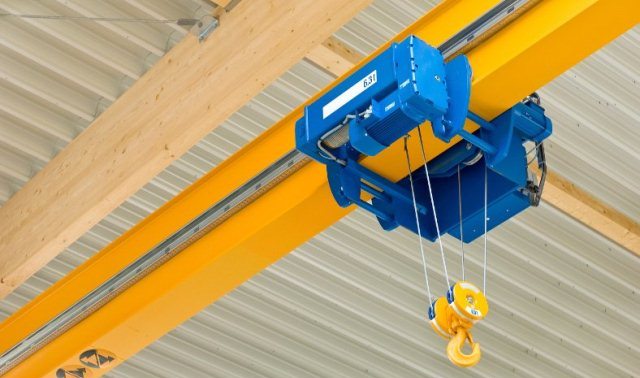
What is an overhead crane?
Overhead cranes are mobile tools designed to carry cargo from one place to another, they are suspended at high altitudes, generally above 15 yards. The displacement of the traveling cranes can be horizontal or vertical.
What is the hoist?
The hoist or rig is a machine composed of two or more pulleys and a rope, cable, or chain that alternately goes through the various throats of each of those. They allow lifting a load exerting a force less than the weight that must be moved.
How do hoists work?
The use of the pulleys minimizes the effort required to move the load. They can have different sizes or lifting powers.
The small ones are manipulated manually and the bigger ones have incorporated an electric motor to make them work.
Depending on the load to be loaded or unloaded there are many types of hoists.
Some are electric, others use manual force or levers to exert their power with the help of chains, cables, branches, hooks, clamps, magnets, and other accessories with similar characteristics.
What is a hoist used for?
A hoist is a tool that is used in workshops to lift or move loads easily.
Its utility lies in the fact that it is hardly necessary to apply force to move a weight, for this reason, the hoists are usually attached to a rotating arm that is coupled to a machine or on the roof of the workshop, fulfilling different functions.
The hoist has a different lifting capacity depending on the load that can be lifted.
This capacity can be increased by increasing the number of branches. An example: a hoist with a branch that can lift 500 kilos can be extended with another branch to raise 1,000.
The hoist is controlled by a control panel that must be perfectly visible and easily understood by the operators:
- Green or white button: On
- Red button: Stop
- There is usually another button for the emergency stop, red on a yellow background. The stop order has priority over the others.
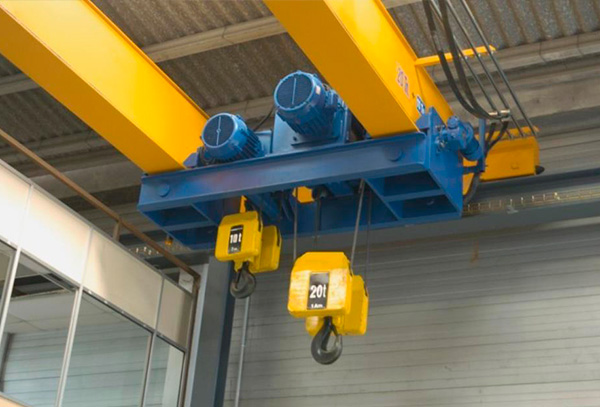
Lifting hoisting equipment
Where are the hoists used mainly? For lifting and moving heavy loads, hoists are usually used together with a crane in:
- Mechanical workshops: in hobbies, hoists are used to lift heavy parts of vehicles, for example, the engine.
- Metallurgical industry: the large containers in which the metal is cast are transported from one side to the other by means of hoists.
- Warehouses: when packing products or merchandise in large quantities or very heavy concentrations, the hoists are used. Also at the time of classifying and inventorying.
- Airports: hoists are used at airports to move luggage and to transport it from the warehouse to the plane and vice versa.
- Maritime ports of embarkation and disembarkation: here its function is combined with that of the cranes. Hoists transport loads between ships or from one part of the ship to the other.

Types of hoist
They can be classified according to these parameters:
According to your number of throats:
- Simple rigging. When one of the pulleys has only one throat
- The rest are called double rigging.
According to the way in which they multiply the force:
- Factorial: the greater the number of moving pulleys, the greater the force applied.
- Potential: multiply the force by 2 and raised the number of pulleys.
- Differential: the force depends on the difference between the length of the radius of both pulleys.
According to the material of the branches:
- Of rope.
- Of cable.
- Chain.
According to the power applied to the machine:
- Manual.
- Hydraulics
- Electric
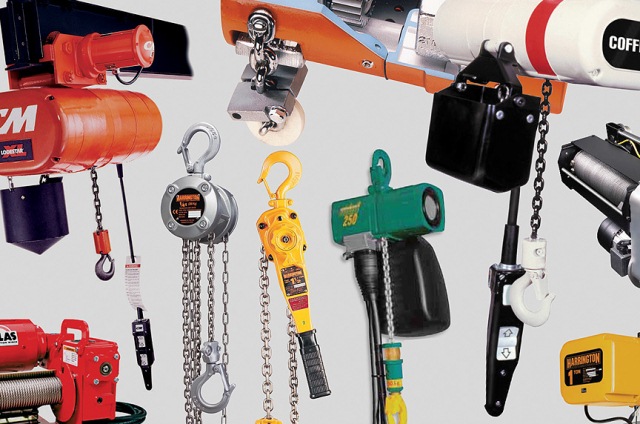
Industrial hoist
The correct use of a hoist: One of these frequent risks are falls or projections of objects, which can be caused by defects in the mechanism or by unforeseen circumstances. Therefore, it is essential to follow some safety tips:
- Periodically check the elements responsible for lifting, to check that they are in perfect condition (for example, check that there are no breaks or signs of wear in the links of the chains). These elements must be made of strong and resistant material, mainly forged steel.
- The chains or lifting elements will be placed on shafts or pulleys that have grooves, to prevent them from twisting when rolled.
- You also have to monitor the hooks, since they are responsible for preventing the load from falling. They must also be wrought iron and incorporate some security elements, for example, latches that ensure the load.
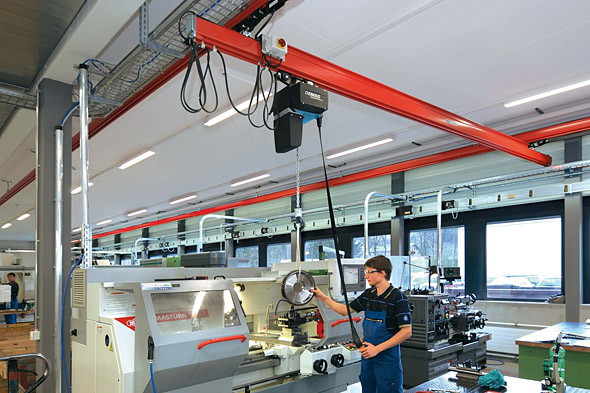
Chain hoist safety practices
Precautions for using a hoist:
- Check the maximum user load of the hoist and do not exceed it.
- Make sure that the chains and metal cables have the proper lubrication.
- Immediately replace any worn metal chain or wire. Label any defective chain or cable and keep it out of service.
- There are hoists that can be driven in different directions but even so, it is preferable to pull as straight as possible. Lateral traction increases wear and can even be dangerous.
- Follow the maintenance program recommended by the manufacturer.
- Make sure there is no person around the load before lifting it.
- Avoid tilting the load since it can become unstable.
- Avoid lifting the load more than is really necessary.
- Do not leave suspended loads unattended.
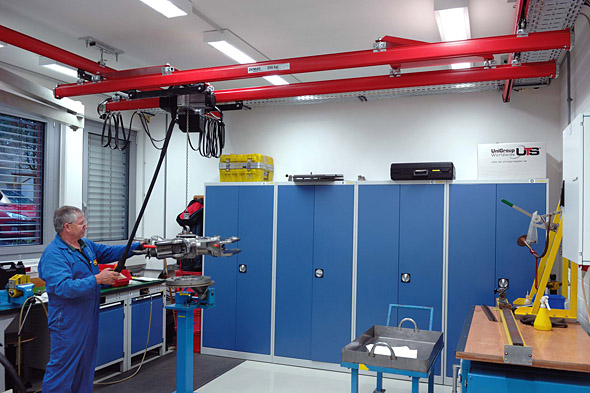
Overhead crane safety
General practices in the use of a hoist: When operating a hoist, there are certain practices that must be followed. When this tool is used, there is an operator and, in some cases, an assigned supervisor or a bookmark.
All persons involved must understand the procedures for the control and execution of maneuvers with the hoist.
The operator must be familiar with the characteristics of the equipment, as well as understand and follow all the safety rules.
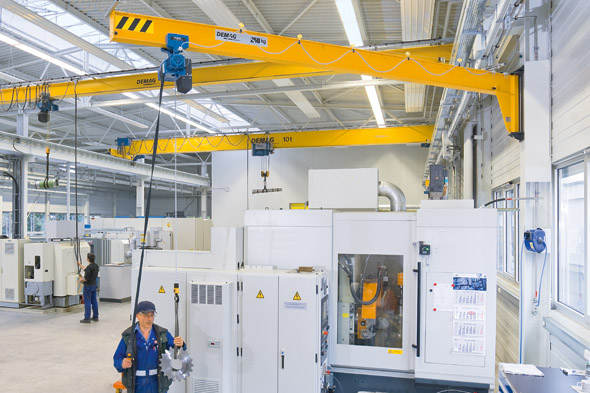
Safety first
A hoist, crane, or forklift must never raise a load greater than the capacity for which they are designed. The only exception is for evaluation purposes.
If a hoist is used for standard lifts that require more than one person, there must be a marker.
This person must be at the lifting site throughout the operation. If only one person operates the hoist, she takes full responsibility.
The designation can be made in various ways, including detailed verbal instructions, written instructions and responsibilities that are clearly defined in the organizational structure of the team.

Supervisor responsibilities
The responsibility of the supervisor is to ensure that the people involved in the operations with the hoist understand the correct way to hoist.
This ensures that the weight of the load and the safe conditions of the site are determined in an appropriate manner.
The supervisor must ensure that the hoist is properly prepared, located, and operational. You must also assign a bookmark when necessary.
In addition, the supervisor is responsible for ensuring that all lifting operations are efficient and safe.
If any potential danger is identified, the supervisor must stop the operation. If an accident occurs, the supervisor is the person to turn to.
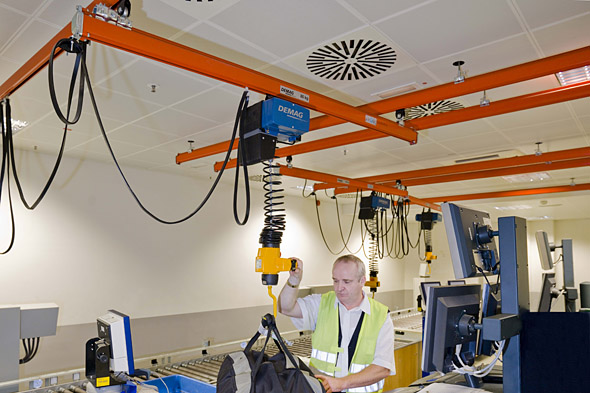
Overhead operator
Pointer and operator practices: The leader directs the lift, and ensures that the load is balanced and secured before being raised more than a few centimeters.
It also checks the load path for possible obstructions.
The operator also has an important role. For example, before starting the lift, make sure there are no kinks in the chain or cables and that multiple lines are not rolled.
If there is no full stretch in the chain or cable, the operator of the hoist must adjust the line on the gear wheel, on the pulley, and so on until the loose part has disappeared.
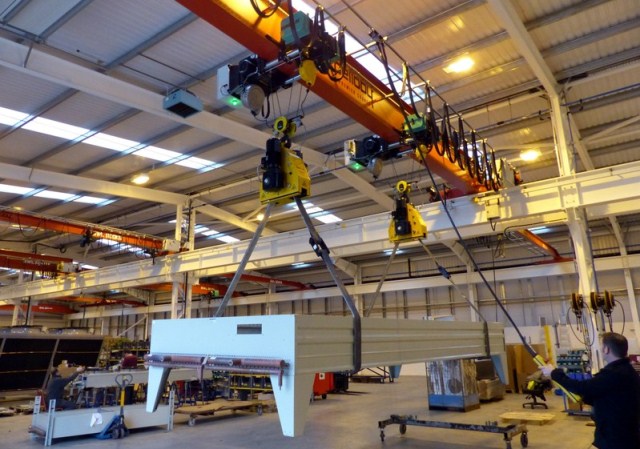
Electric winch hoist
Differences between a winch and a hoist: the winch allows horizontal displacement of the load.
Probably these two computers have a similar appearance, however, they are manufactured for two different purposes. This equipment is designed to pull a heavy load horizontally on a slightly inclined or level surface, greater than 45 degrees.
The use of a winch or a hoist can make heavy lifting tasks easier.
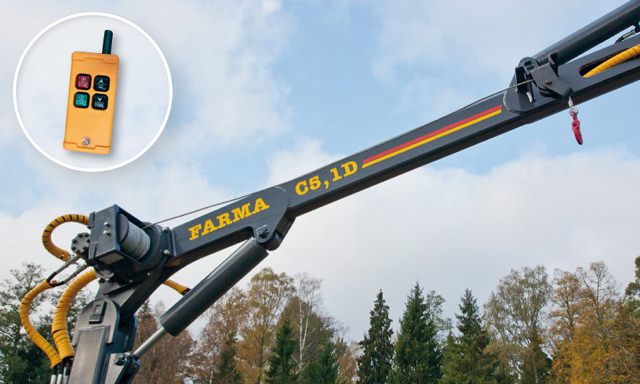
How do the winches work?
Winches are devices used to wind a cable or rope in or out.
Most winch drums are made of steel, they consist of a rope or cable wound around a drum or cylinder. This equipment can move cars, boats and heavy parts much more complex.
How do the hoists work?
To lift heavy objects, such as a motor block or construction material, which requires lifting or lowering a load, a hoist must be used.
Hoists are typically made of motors. Powered hoists include all those that are driven by electricity, hydraulics, pneumatics, or manually operated.
Electric chain hoists are ideal for mechanical and chain hoists are recommended for lifting heavy materials in flammable environments.
Break system
The main difference between a winch and a hoist is in the braking system. The most offroad system is designed to automatically maintain the load. A dynamic brake uses the gears of the braking system. The winch cable could wear out slightly under a heavy load.
If a winch is used as a hoist, the load could fall, creating a risk of danger, or the lifting gears could use a mechanical braking system, which is a physical break that blocks the available reel mechanism in a hoist.
Some winches are specially designed to work like a hoist. In order to slow down and not have a free spool mechanism. Never use a winch like a hoist unless the manufacturer recommends it.
What is an overhead crane?
The principal parts of overhead traveling cranes are bridge girders, end trucks, trolleys with hoisting mechanisms, and the operator’s cab or pendant control. Careful repair and maintenance are essential to safe crane operations.
While OSHA standards do not spell out overhead crane training requirements, the American Society of Mechanical Engineers does get much more specific in the ASME B30.2 standard. It further states that a company’s management is responsible for “providing training to persons who will operate a crane”
The standard workweek for crane operators is 40 hours (8 hours a day, 5 days a week). As with many careers in construction, there are peak periods that will require you to work overtime.
The majority of bridge or gantry cranes do not require a license to operate as they are both remote or pendant controlled and are limited to 3 or fewer powered motions (hoisting, traverse, and travel). The regulations do not define the extent of the powered operation.
Overhead cranes are sometimes also called bridge cranes and are most often found in an industrial environment, and they consist of parallel runways with a traveling bridge spanning the gap.

Overhead Cranes
- What are the parts of an overhead crane?
- What is the purpose of an overhead crane?
- How much does an overhead crane cost?
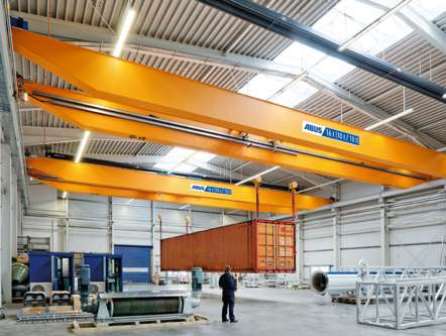
Overhead Crane Test Questions and Answers
- Crane operator interview questions and answers
- Rigging test questions and answers
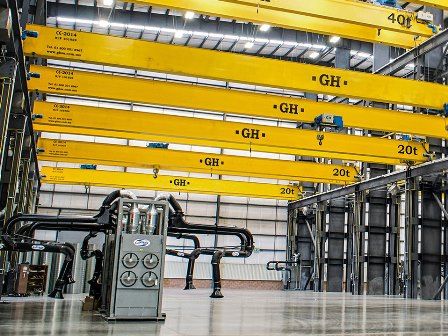
Overhead crane manufacturers in the USA
Some have wondered if in the United States they fix, manufacture, and elaborate parts, and components of overhead cranes.
